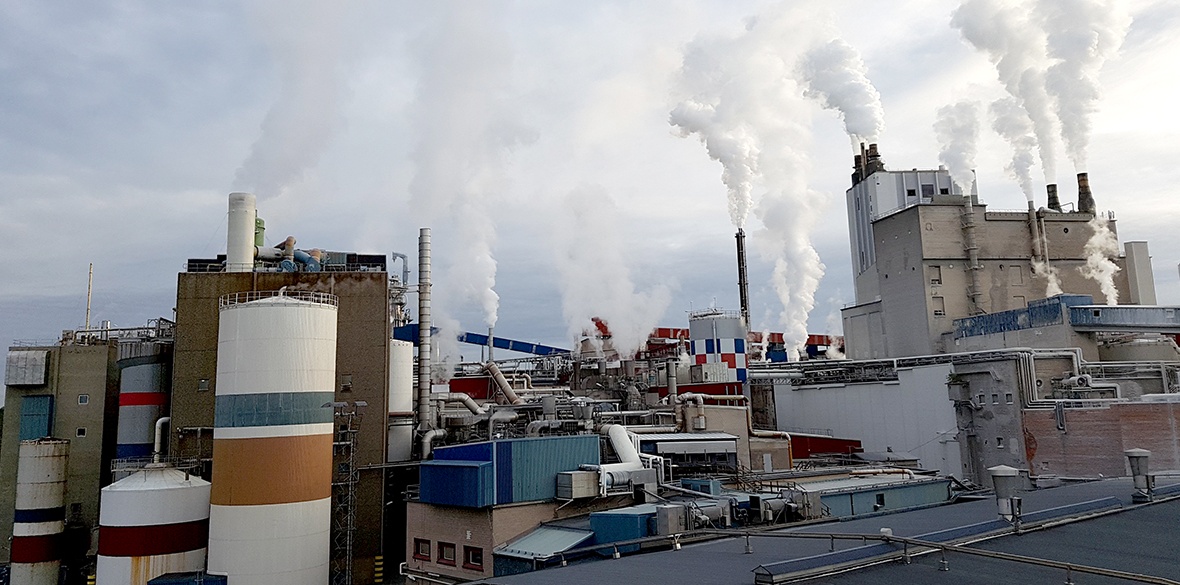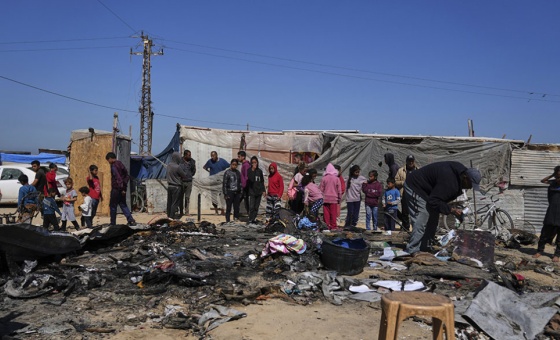This is the last article you can read this month
You can read more article this month
You can read more articles this month
Sorry your limit is up for this month
Reset on:
Please help support the Morning Star by subscribing here
THE climate crisis produces a radical change in the needs and aims of both the world’s population and the powerful agents that shape our lives.
The crisis presents uncertainty: opportunities for both revolutionaries and reactionaries to seize control of the moment.
As climate consciousness has become mainstream, ideas in capitalism and neoliberal governance have evolved. One such idea is “green capitalism” in the form of carbon markets.
Carbon trading was officially adopted by 192 countries with the 1997 Kyoto Protocol. The idea is that trading the right to emit greenhouse gases means that emissions can be controlled and reduced using financial markets.
By producing a new commodity, “carbon credits,” greenhouse gas emissions will be reduced.
In global carbon trading, money can be transferred away from rich polluting companies, where reductions in carbon emissions is thought to be costly, to poor countries, where carbon can supposedly be more inexpensively captured, thus resulting in a global transfer of wealth, and a reduction in carbon in one fell swoop.
This is the “Clean Development Mechanism” of the protocol that came into effect in 2007, one of three forms of market that the protocol established.
Since then a zoo of carbon markets has opened up, dealing with different jurisdictions, sectors or instruments. All rely on the trading of carbon credits, where one credit is a permit to release greenhouse gases equivalent to one ton of carbon dioxide.
The report by the International Carbon Action Partnership (ICAP, a intergovernmental forum) on carbon markets explains that emissions trading now operates in countries responsible for 55 per cent of global GDP (although covers just 17 per cent of global greenhouse gas emissions), and that they “raised $161 billion globally as of the end of 2021.” A bit less, but of a similar order of magnitude as the global market for cosmetics, or eggs.
Carbon credits are tied to a physical process. Each carbon credit corresponds to real gases (not) being released into the atmosphere, and as such the price should reflect the real cost to make that (not) happen — unlike, for example, the value of a brand name.
But they are an artificial commodity thought up by committee, rather than one that has emerged from pre-existing markets: by construction, the only use of the credits is for legal or “justified” pollution, and more strikingly, the non-release of hypothetical carbon requires various accounting schemes based on imagined alternative realities.
Many of the carbon markets are “cap and trade schemes.” In these, jurisdictions like the EU or China decide a cap on the total carbon that can be emitted by industries. In practice, this limit covers aviation and industries like the manufacture of steel, glass, concrete, aluminium and paper.
Credits for this pollution are distributed (generally for free) to the companies that will do the polluting. These companies must then keep their emissions below the credits they have, or buy more credits traded from other members of the scheme. The overall cap should then decrease over time.
The cap and distribution of credits is generous and subject to intense lobbying from polluting industries. In principle they are fined for emitting beyond the credits they hold, or buy, but in practice they often receive governmental bailouts to buy those credits if they get into trouble.
For example Tata and Jingye’s British steel-manufacturing branches were handed millions of pounds to buy additional carbon credits to account for pollution they had already produced.
The other major form of carbon market is the voluntary carbon market. This is where individuals or companies outside of heavy-industry choose to contribute to buy carbon credits. These markets operate through investment in carbon-reduction projects. Voluntary carbon markets are estimated to be worth $2bn and growing.
Although the cap-and-trade mechanisms are constructed so that the overall limit of carbon emitted in one jurisdiction must decrease, the Clean Development Mechanism and the voluntary markets are designed to allow rich countries and companies to continue emitting, and to outsource the reduction in emissions to poorer countries and companies.
This has been criticised for being neocolonial, ineffective, and for resulting in profiteering rather than actually reducing carbon emissions.
The question of whether the carbon credits themselves correspond to real reduction in pollution is important. Has financialisation brought a meaningful change, or is it merely a distraction?
There are many ways that carbon can be prevented from entering the atmosphere: projects promise filters in chimneys, carbon capture, burning biomass and sequestering it… This makes the accountancy of all the hypotheticals working out the meaning of carbon credit schemes very complex.
Much of the money that a carbon credit costs is required to pay an accrediting organisation for calculation and verifying projects. There are many such accrediting organisations, each with their own scheme (such as The Gold Standard or the Carbon Social Standard).
Carbon credits can also be justified by removing carbon through storing in soil, water or burying it underground. Biomass proponents claim that they could capture carbon produced from burning plantation trees for power, and bury it underground so that it won’t be released as greenhouse gases.
Some biomass projects have big questions over them. For example, Drax runs a biomass power station in North Yorkshire which was accused by BBC Panorama of burning natural-growth Canadian forests.
Drax made profits of £731m in 2022 and is heavily subsidised by the British government as a “bioenergy firm” — but although it intends to start saving and sequestering carbon in the future, that hasn’t started yet.
However, the most popular carbon offset projects in the voluntary markets are rainforest protection schemes.
Money spent on these credits is supposed to protect pristine forest from destruction or allow it to grow back. This requires projecting where and how rainforest is likely to be destroyed, and then reducing that destruction, a task full of the challenge of hypothetical situations.
The largest of the accreditors for these schemes is Verra. At the beginning of 2023 a large study found that unfortunately, the credits verified by Verra are worthless. There was no evidence that any trees were saved from destruction by Verra’s schemes — and some of them appeared to have made it worse.
These are not new criticisms, but the force of the argument made has undermined all credibility of Verra’s claims. Companies that claimed to have been “offsetting” their pollution for years by outsourcing to the rainforest have been doing nothing of the sort.
The only real way to reduce emissions is to reduce emissions, to stop burning carbon, whether that is forests, oil or gas.
“Green capitalism” has the capacity to make some people very rich, not the capacity to save the environment and the people that need it.







